Acute and Chronic Management of Hyperkalemia
An expert discusses the structured approach to acute hyperkalemia management—focusing on cardiac protection, intracellular potassium shifting, and elimination—while emphasizing the chronic challenges in patients with CKD and heart failure, and highlighting the critical role pharmacists play in optimizing long-term therapy, medication safety, and adherence through advanced treatment strategies.
Episodes in this series

This content is a production of Drug Topics; this Pharmacist View Video is supported by funding from AstraZeneca. AstraZeneca was not involved in the creation of the content for this Video.
Acute management of hyperkalemia can be organized into 3 key therapeutic goals: cardiac stabilization, intracellular potassium shifting, and potassium elimination. The first and most urgent step is to protect the heart, as the greatest danger posed by hyperkalemia is potentially fatal arrhythmia. This is typically achieved with intravenous calcium, such as calcium gluconate or chloride. Once cardiac stability is addressed, the focus shifts to redistributing potassium back into cells using agents like insulin with dextrose, nebulized beta-agonists, and sometimes sodium bicarbonate. Finally, elimination of excess potassium is essential to prevent recurrence. This can involve dialysis in severe cases, diuretics when appropriate, and potassium binders—traditionally sodium polystyrene sulfonate, but increasingly novel agents like sodium zirconium cyclosilicate or patiromer, which offer improved safety and efficacy.
Hyperkalemia is also a chronic condition, particularly common in patients with advancing chronic kidney disease (CKD) and heart failure. As kidney function declines, potassium clearance diminishes and the risk of hyperkalemia increases. This risk is compounded by essential medications such as mineralocorticoid receptor antagonists (eg, spironolactone) and other renin-angiotensin-aldosterone system inhibitors, which raise potassium levels but are crucial for improving outcomes in these patients. Chronic hyperkalemia often persists at moderately elevated levels (eg, 5.5-6.0 mmol/L), frequently without symptoms, making routine monitoring and risk mitigation strategies vital in long-term care.
Managing chronic hyperkalemia effectively is essential not only for patient safety but also for maintaining quality of life and medication adherence. Pharmacists play a pivotal role in optimizing therapy by guiding the selection of lower-risk medications, recommending newer agents such as non-steroidal MRAs or SGLT2 inhibitors, and initiating novel potassium binders approved for long-term use. As the prevalence of cardio-renal comorbidities rises, particularly among aging populations, pharmacists’ involvement in balancing treatment efficacy with potassium management will remain critical in ensuring safe, guideline-based care.
Newsletter
Pharmacy practice is always changing. Stay ahead of the curve with the Drug Topics newsletter and get the latest drug information, industry trends, and patient care tips.

































































































































